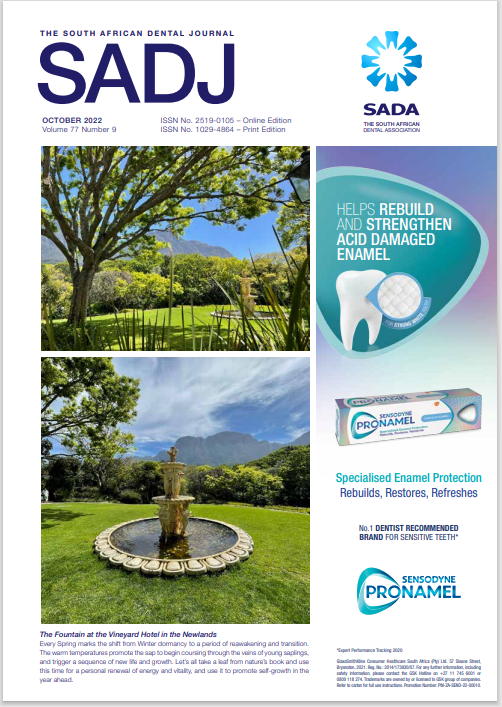What’s new for the clinician– summaries of recently published papers
DOI:
https://doi.org/10.17159/2519-0105/2022/v77no9a6Keywords:
mitigating, extractionAbstract
Particles, particularly aerosols, and splatter generated during routine dental procedures have been shown to have the potential to transmit the SARS-CoV-2 virus to patients. Thus, controlling the spread of aerosolized particles has become one of the core strategies for reducing occupationally acquired infections with the SARS-CoV-2 virus1 . The World Health Organization (WHO) defines
splatter as particles greater than 100 μm in size, droplets as particles between 5 and 100 μm in size, and aerosols as particles smaller than 5 μm. 1 Dental procedures generate particles that are a mixture of saliva, blood, water coolant, plaque, gingival crevicular fluid,
tooth hard tissue debris, calculus, and dental restorative materials that generate potential hazards to dental professionals.1 The extent and spread pattern of common
dental AGPs need to be identified before applying mitigating
strategies.
Downloads
References
Simulated and clinical aerosol spread in common periodontal aerosol-generating procedures
Influence of radiotherapy on dental implants placed in individuals before diagnosed with head and neck cancer: focus on implant-bed-specific radiation dosage
Downloads
Published
Issue
Section
License

This work is licensed under a Creative Commons Attribution-NonCommercial 4.0 International License.






.png)